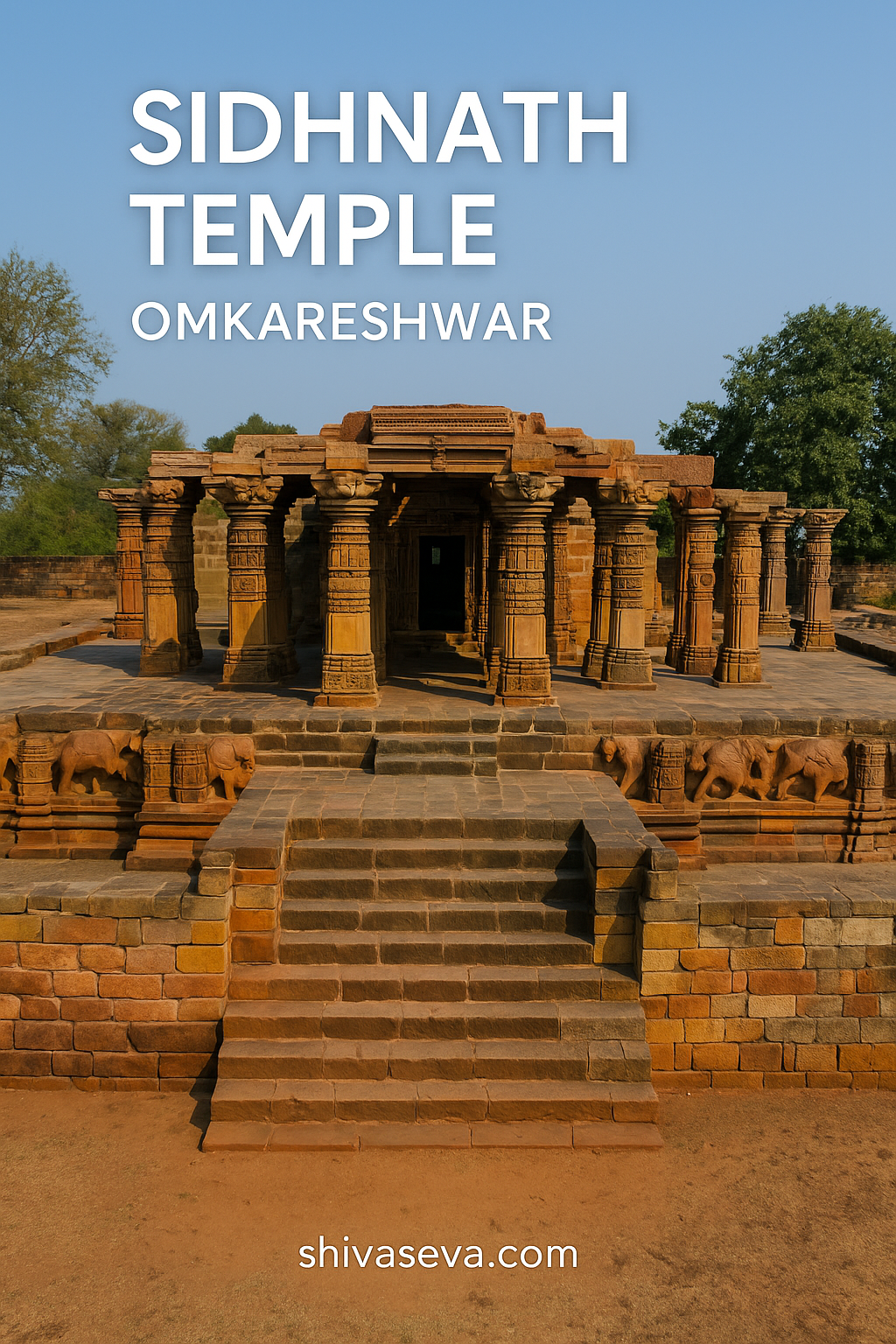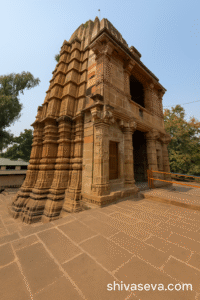🏛️ Architectural Brilliance
Siddhanath Temple dates back to the 13th century and is a striking example of Brahminic and Indo-Nagara architecture.
It is built on a massive raised platform (plinth), surrounded by beautifully carved stone elephants in various postures—symbolizing strength and divine protection.
The temple features four entrances, allowing access from all sides.
Inside is a magnificent Sabhamandapa (pillared hall) with 18 intricately carved stone pillars, each over 14 feet tall.
These pillars depict ancient art and life scenes, reflecting the skilled craftsmanship of that era.
Though some parts of the temple seem incomplete, it’s believed that the temple, in its original form, would have been one of the grandest structures in central India.
📍 Location – A Hidden Gem on Omkar Parvat
Siddhanath Temple is located on the sacred Omkar Parvat, the naturally Om (ॐ)-shaped hill island of Omkareshwar. This area is considered spiritually powerful, as it forms the very heart of the Om Parikrama—a 6–8 km circumambulation route taken by thousands of devotees and sadhus.
🛤️ Access:
The temple is not accessible by vehicle.
It can only be reached on foot by walking the Om Parikrama path, which starts near the main Jyotirlinga temple or Gomukh Ghat.
The walk is spiritually rewarding, offering scenic views of the Narmada River, dense greenery, and other ancient shrines along the route.
📍 Distance:
~1 km from Omkareshwar Jyotirlinga Temple (as the crow flies)
Located near the final stretch of the Parikrama circuit
🧘 The peaceful, traffic-free environment and natural surroundings make Siddhanath Temple an ideal place for meditation, spiritual reflection, and quiet darshan.
🛡️ Historical Legends and Protection
The temple was declared a protected monument by Lord Curzon during British rule.
It is said that Mughal ruler Aurangzeb attempted to damage the temple in search of hidden treasures.
There are also local beliefs that Mahmud of Ghazni attacked it, but the temple stood resilient, symbolizing strength and endurance.
🙏 Religious Significance
Though not a Jyotirlinga, the Siddhanath Temple is highly revered:
Lord Siddhanath is worshipped here as an enlightened form of Lord Shiva.
Devotees believe that prayers offered with sincerity here result in blessings of wisdom, clarity, and fulfillment of desires.
The temple is a sacred stop for sadhaks and pilgrims performing the Om Parikrama—a 6-8 km sacred circumambulation of Omkar Mountain.
🪔 Best Time to Visit
🗓️ Shravan Month (July–August): Special importance for Shiva devotees.
🌄 Early Morning: For a serene, meditative atmosphere.
🎉 Maha Shivaratri & Guru Purnima: Spiritual events are held here by local saints and sadhus.
📸 Travel Tips
✅ Wear comfortable footwear for the Parikrama trail (remove near temple).
🚶 The temple is accessible via the Omkar Parikrama walking route.
🧭 Carry water and sun protection during daytime visits.
🧘 Why You Must Visit Siddhanath Temple
Architectural beauty unlike any other temple in the region
Less crowded than the main Jyotirlinga temples—perfect for peace seekers
Rich in mythology, art, and meditative energy
📝 Conclusion
Siddhanath Temple is not just a historical monument—it’s a living spiritual center that whispers stories of devotion, resilience, and divine energy. Whether you’re a history lover, a spiritual seeker, or an admirer of ancient Indian craftsmanship, Siddhanath Temple in Omkareshwar is an unmissable gem on your journey.





